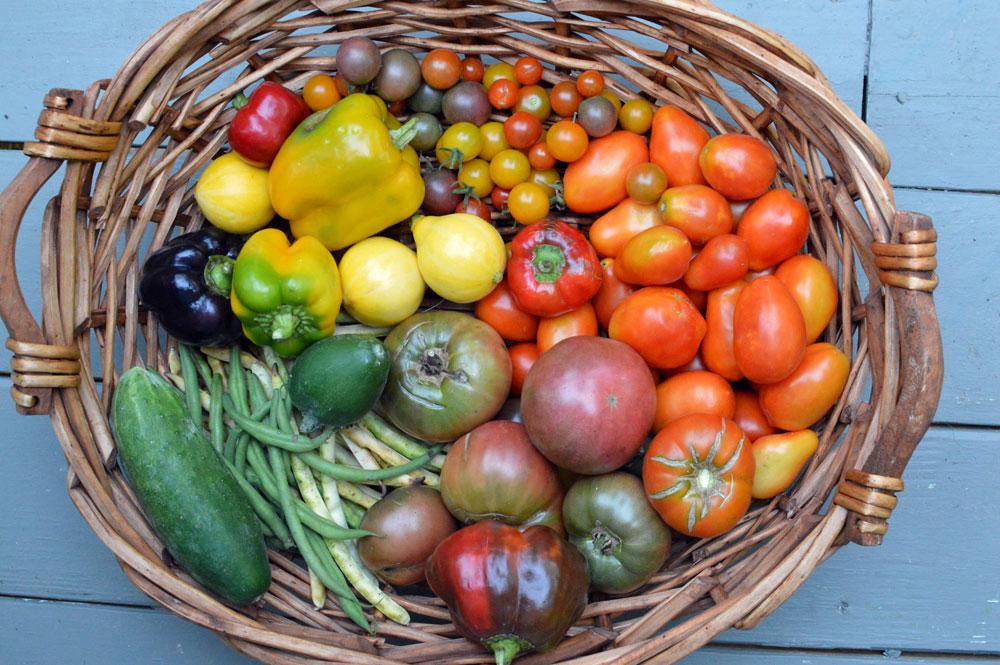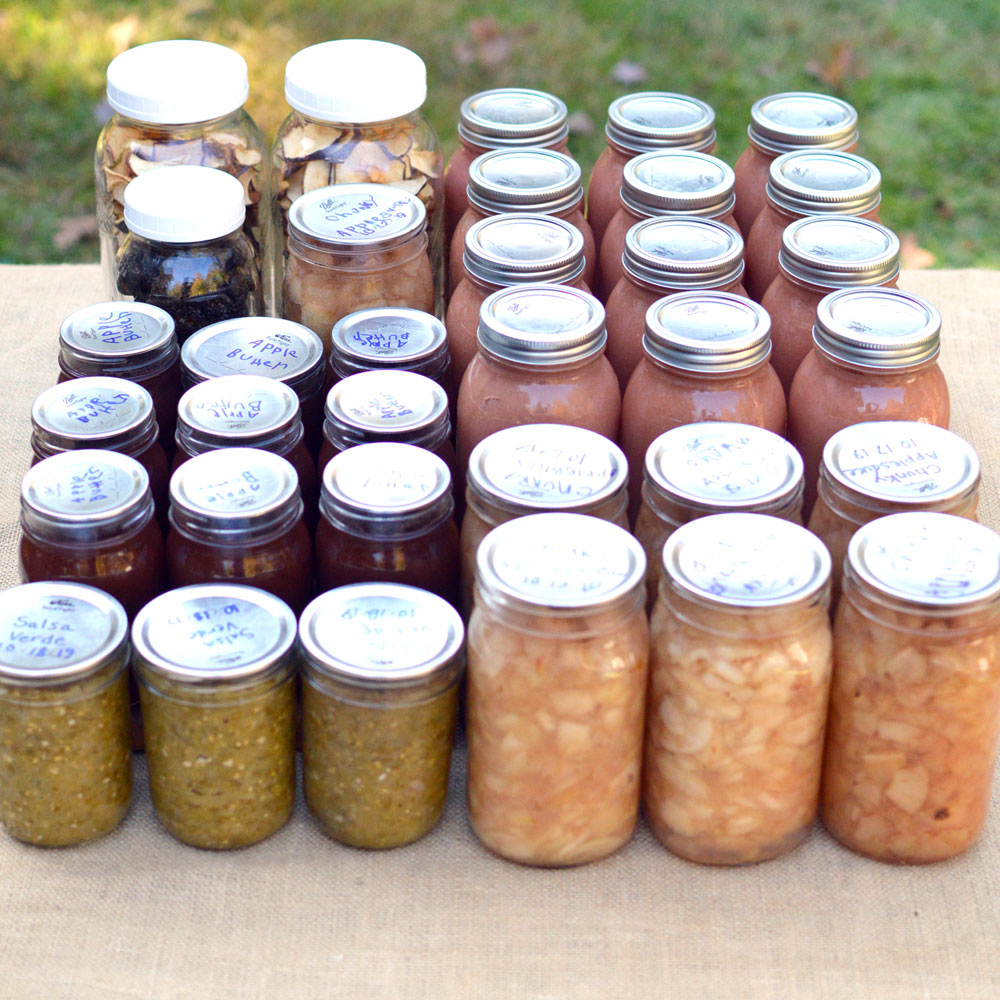The Weekly Digs #47 (5 Lessons Learned from our Homestead 2019)
There is no shortage of lessons to be learned each year as we embrace homesteading. Most of my lessons come from the garden since it plays such a pivotal role with becoming more food self-sufficient.
If the garden fails, we really feel it because we opt not to buy vegetables from the grocery store. Here are the 5 biggest lessons I’ve learned in 2019 and what I plan to do differently next year.
This post contains affiliate links. Here is the full disclosure.

#1. Grow Different Varieties of Every Plant
This was a hard year for the disease prone crops like tomatoes. With our wet spring the tomatoes caught both early blight and Septoria leaf spot. My yield was about half of what it was last year even though I had planted ten more plants!
I also had a very bad year for beans and I wasn’t able to preserve any green beans. We were able to eat some fresh but the beans (which are usually an easy plant for me to grow) were so disease laden they produced hardly anything after the initial harvest.
The poor yield of those two crops had me rethinking what I could do differently next year and how I could prevent so much loss in yield.
What I’m doing do differently is make sure to have enough backup varieties. It’s a rare thing for all varieties of one crop to perform poorly. Take for example my tomatoes this year. My Roma’s which a very important crop for preserving didn’t produce nearly enough.
However, my black cherry tomatoes produced a huge bumper crop, they didn’t fall to disease the same way my other varieties did. My plan is to do a couple varieties of each type of tomato. For paste tomatoes this year I will do at least three types, Roma, San Marzano, Amish Paste, and possibly more.

#2 Grow Disease and Bug Resistant Varieties
Over the years, I’ve slowly found varieties that work well for the disease and bug prone plants.
My favorite of all time is a summer squash I started growing over five years ago. It’s called Lemon Squash and it has no problem dealing with squash bugs and borers, which kill other summer squash within the first month of fruit production (at least here in Arkansas they do!).
Lemon squash grows and produces all summer long but doesn’t really ever overwhelm me with squash the way some plants do.
I have also found a cucumber I really love called Homemade Pickles has the same qualities of bug and disease resistance. I’d love to have at least one of these resistant and easy to grow plants for each vegetable and fruit I grow. I am still on the hunt for a fail-proof paste tomato, brussel sprouts, and green and dried beans.
Prevention is always the best method of success in my organic garden.

#3 Test Canning Recipes Before Actually Canning
If you find a canning recipe that you love right away consider yourself lucky! Over the years I’ve finally found an awesome salsa recipe that our family loves, a great dill pickle recipes, and some jams that are delicious!
However, I had mega fails in the taste department with quite a few canning recipes this year and it always frustrates me. With all the work that goes into canning I feel like it’s not too much to ask to have it actually taste good.
This year we tried a peach barbecue sauce that made 9 pints and I didn’t even like it. Then there was the cranberry sauce where I followed a recipe that used coconut sugar and the coconut sugar completely overpowered the cranberry sauce so much that it didn’t even taste like cranberries anymore.
The other mistake I made with the cranberry sauce was that I doubled the recipe before I had even tried the recipe. I then figuring it would improve with age, I canned it all and it was still just as bad when I opened it.
My plan for this year for any new canning recipe is to make a half or quarter batch to taste test it first and probably not even can the test batch.

#4 Get Fall Plants in the Ground at the Right Time
Planting a garden to be ready for a fall harvest can be a bit tricky for several reasons. I’ve been planting a fall garden for about 8 years and I’m still working on getting it right!
The difficulty in my region comes from trying to plant late enough to miss the bugs and serious summer heat but early enough for it to mature before we hit the cold temperatures and very few daylight hours.
I’ve tried growing Brussel sprouts for three years now and because of the long growing time they have always frozen to death before I actually harvest. Thankfully, I have the carrots, turnips, lettuce, and smaller crops mastered as far as timing.
One important thing I’ve learned when growing fall crops is the days it takes it to get to a harvest or maturity is longer than what the seed packet says. This happens because the days you are growing in have fewer hours as you go into fall.
This year I protected against cabbage worms with insect netting and it was very successful. That means that I can start the fall brassicas earlier next year and hopefully get a harvest!

#5 Be more Strategic about Garden Planning
I did a complete plan for where my crops were going to go in 2019, however, I didn’t really have a plan for an exact number how many plants could fit in each allocated location. It made things really frustrating because I couldn’t fit everything I started indoors into the outdoor garden.
I know its good to start extra plants indoors and I have no problem giving extras away. However, I knew that I needed to plant at least 40 tomatoes to have enough to last us year and then I couldn’t fit them all in the garden without over crowding it.
Consequently, I planted a lot of tomatoes outside my garden fencing this year and it worked surprisingly well. I only lost a few of the lower tomatoes to chickens and rabbits.
This year I’m being a lot more strategic about planning exactly how much I will plant. I’ve done this before with my smaller garden but never with the scale I have now.


